Exploring the Magic of Using Unique Building Materials
Three Spaces Rich in Atmosphere, Harmony and Sensitivity of the Light
The employment of a single construction material in the creation of spaces is believed to imbue them with a sense of magic and beauty. When a building is constructed entirely from one material, it possesses a unique quality that draws attention to the space itself. This focus highlights the atmosphere, monochromatic harmony, the play of light within the space, and all intricate details present.
Bare materials and direct techniques, remove non-essential gestures and reduce things to their essence. The structure thus created can be felt and perceived with all of one's senses.
"For the style is created by the material, the subject, the time, and the man." S.E. Rasmussen
Certainly, the humblest material for creating spaces for contemplation and tranquility is raw concrete. And the Bruder Klaus Field Chapel by Peter Zumthor is undoubtedly an architectural landmark in this sense.
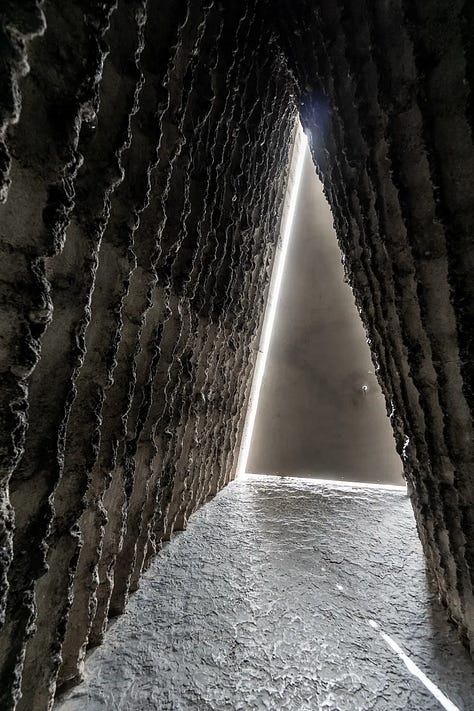
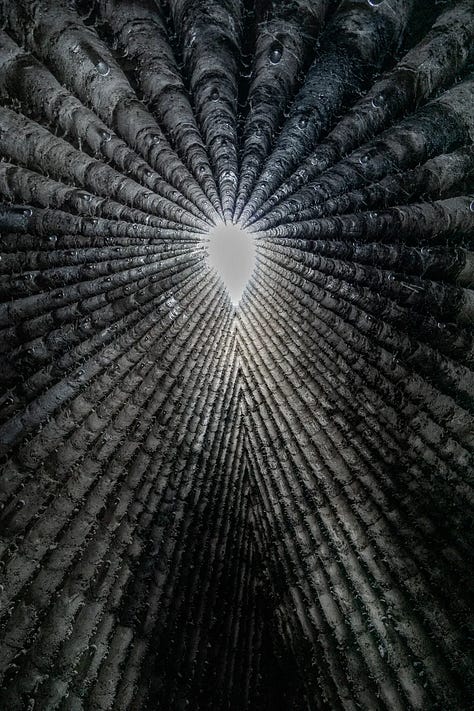
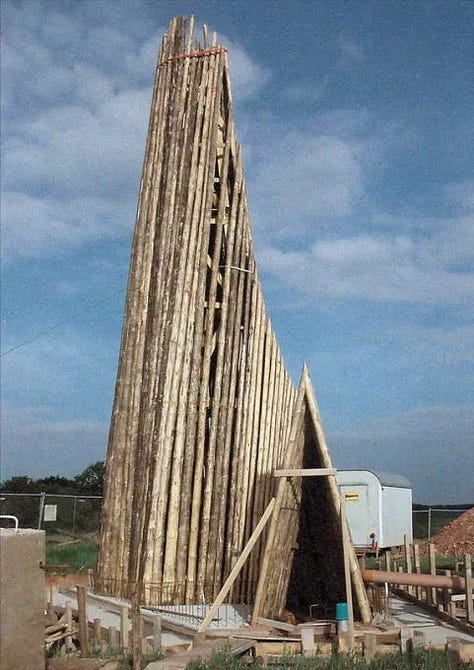
Whether it's about the technique by which the concrete was poured for 24 days called rammed concrete, whether it's about the formwork made of 112 tree trunks or the fact that the wooden structure was burned, a slow burn that lasted 3 weeks, or maybe all these aspects and many other details that the architect thought carefully about made this space have a special uniqueness.
Upon examination of Mircea Eliade’s book “Images and Symbols: Studies in Religious Symbolism,” where he discusses the symbolism of the “Center” - the Cosmic Tree, one may ponder whether the method of construction is linked to this symbolism. (*)
Another masterpiece built from the same essence from the floor to the columns and ceilings, interior and exterior, creating a peaceful unity is Grundtvigs Church by Peder Vilhelm Jensen-Klint.
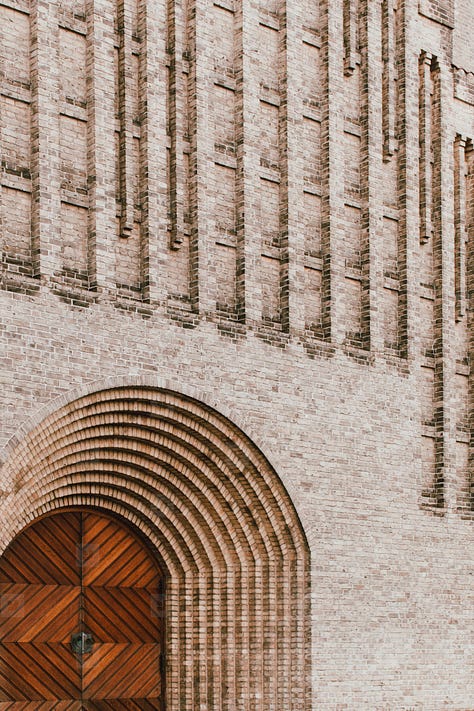
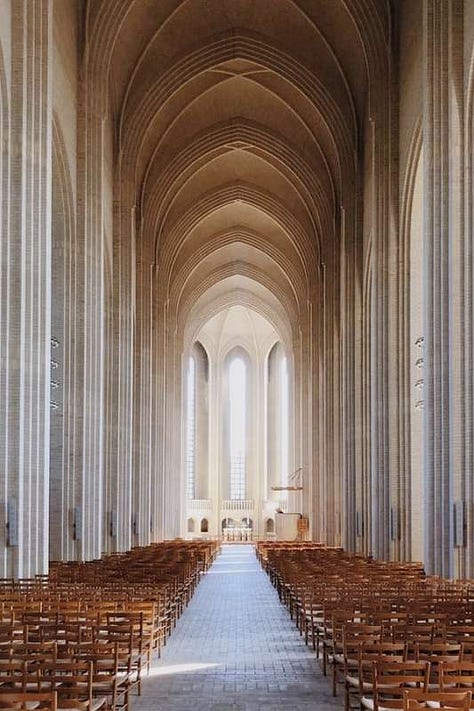
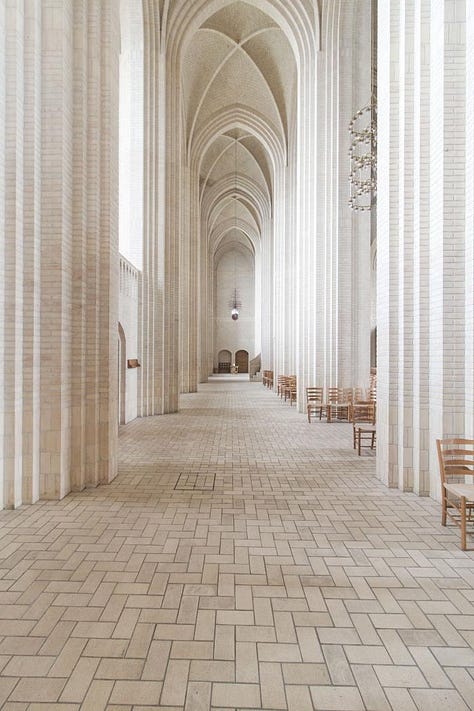
The church, constructed from 5 million yellow bricks, was notably described in an article by the Danish Architecture Center (Dansk Arkitektur Center) (*).
This significant architectural achievement likely had a lasting influence on Danish architects. Architect Dan Stubbergaard, founder of Cobe,, discussed this structure at the Architects, not Architecture. event.(*)
Moving away a little from the religious sphere, but keeping the theme of the singularity of the material, Casa Cava architecturally restored by Renato Lamacchia, was born in a tuff quarry in Matera.
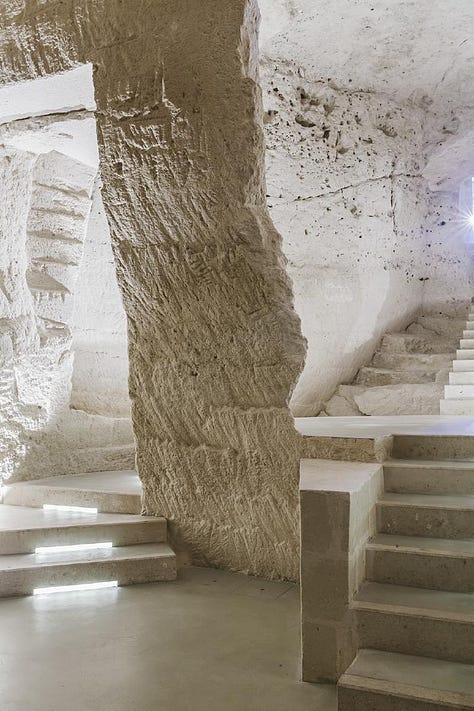
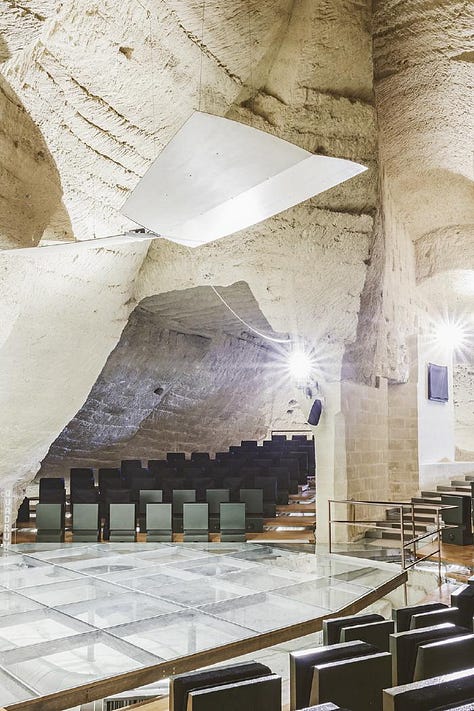
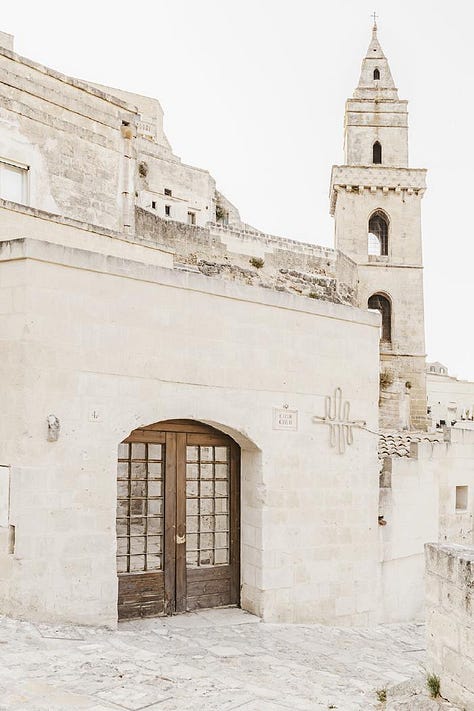
The only underground cultural center in the world, a place transformed for creativity in a pure and authentic scenery that have seen traces of man since prehistoric times and bear witness to the history of humanity, having been continuously inhabited. A different way of "building" than we are used to, which requires extraction and not addition.
A space sculpted with great skill gives the public not only a space intended for performances but a show of shapes, textures, sounds and the play of shadows and lights.(*)
(*)More in the comments





More on Casa Cava in Matera:
https://www.youtradeweb.com/aldes-per-lauditorium-casa-cava-di-matera/
https://www.materawelcome.it/en/luogo/casa-cava/
https://divisare.com/projects/312011-renato-lamacchia-pierangelo-laterza-casa-cava
https://www.archilovers.com/projects/80092/casa-cava-matera.html
Dan Stubbergard - Architects, not Architecture. event
https://www.architectsnotarchitecture.com/halloffame/dan-stubbergaard/